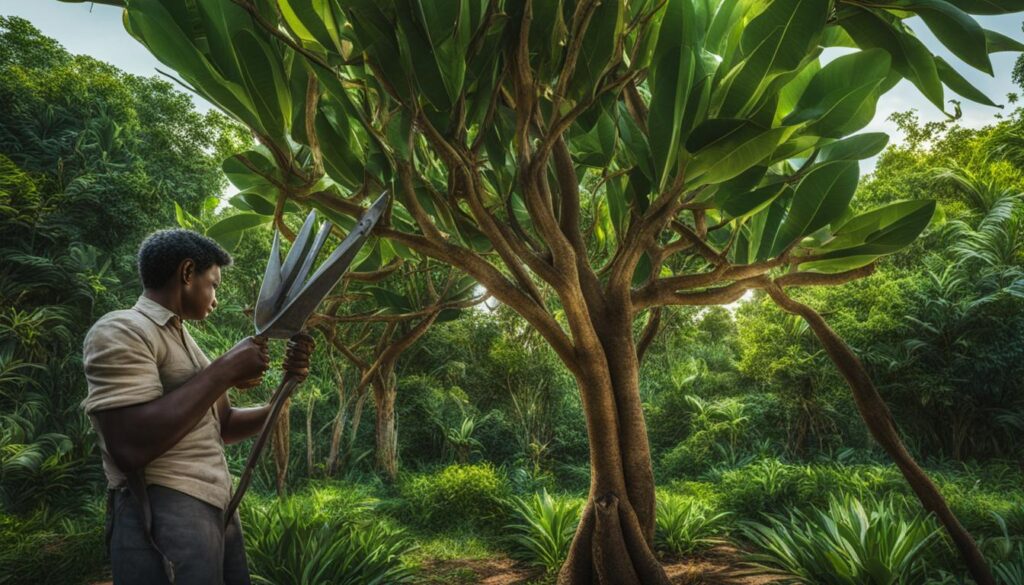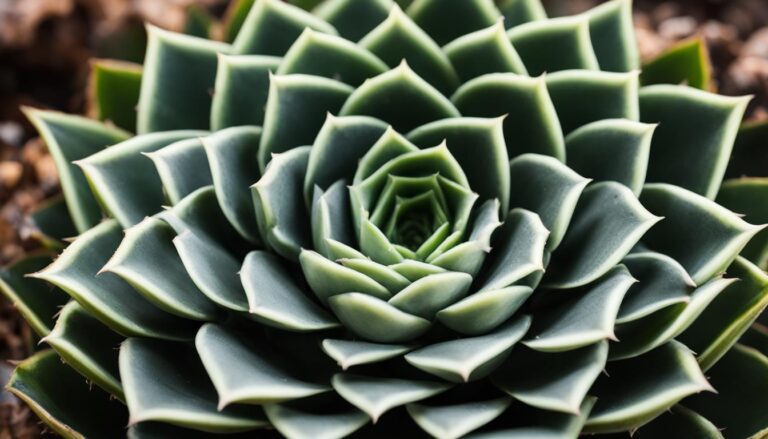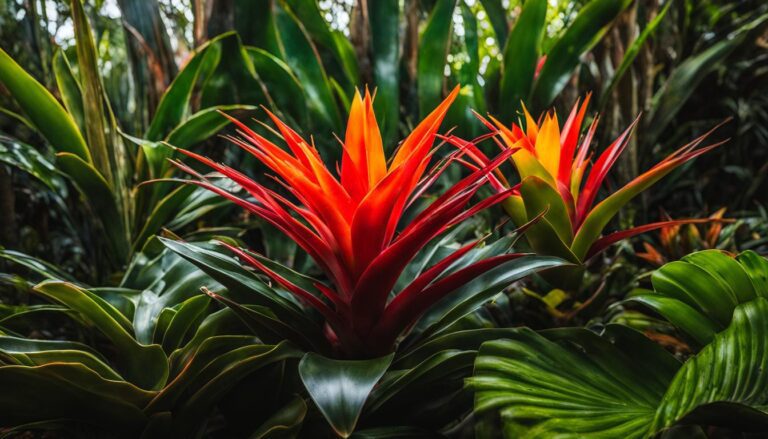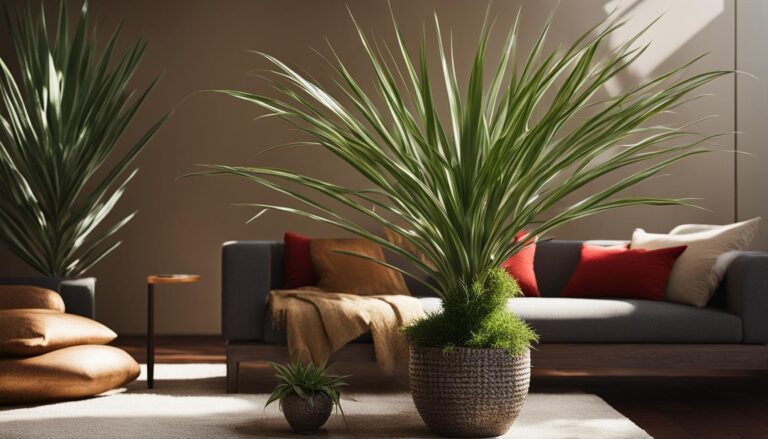
Are you looking for a stunning and low-maintenance addition to your indoor plant collection? Look no further than the Rubber Tree, scientifically known as Ficus elastica.
This tropical plant, native to Southeast Asia, can be cultivated as a houseplant, bringing its vibrant foliage and unique aesthetic to any room. In this comprehensive guide, I will share essential care tips, propagation methods, pruning techniques, and the many benefits of the Rubber Tree.
Rubber Tree Varieties for Indoor Cultivation
When it comes to indoor cultivation of rubber trees, there are several popular varieties to choose from. Each variety has its own unique characteristics that add charm and beauty to any indoor space. Let’s take a closer look at some of the most sought-after rubber tree varieties:
Ficus elastica ‘Tineke’
- This variegated variety features stunning yellow veining on its leaves.
- The vibrant foliage of ‘Tineke’ adds a touch of visual interest to any room.
- It thrives in bright, diffused light and requires regular watering to keep the soil moist.
Ficus elastica ‘Burgundy’
- This variety boasts crimson leaves that mature into a deep maroon color.
- The striking foliage of ‘Burgundy’ adds a dramatic flair to indoor spaces.
- It prefers bright, indirect light and should be watered regularly to maintain optimal soil moisture.
Ficus elastica ‘Ruby’
- ‘Ruby’ is another variegated variety with vibrant foliage throughout the year.
- Its leaves showcase a mix of green, pink, and cream colors, creating a stunning visual display.
- Similar to other rubber tree varieties, ‘Ruby’ thrives in bright, diffused light and requires consistent watering.
Ficus elastica ‘Robusta’
- This particular variety is known for its robust growth and large leaves.
- ‘Robusta’ is an excellent choice if you’re looking for a statement plant that demands attention.
- It appreciates bright, indirect light and should be watered regularly to keep the soil evenly moist.
These rubber tree varieties share similar care requirements, making them ideal choices for indoor cultivation. With proper lighting, watering, and attention, they will thrive and bring natural beauty to your home or office space.
| Rubber Tree Variety | Key Features | Lighting Requirements | Watering Requirements |
|---|---|---|---|
| Ficus elastica ‘Tineke’ | Variegated with yellow veining | Bright, diffused light | Regular watering to keep soil moist |
| Ficus elastica ‘Burgundy’ | Crimson leaves turning maroon | Bright, indirect light | Regular watering to maintain soil moisture |
| Ficus elastica ‘Ruby’ | Variegated with green, pink, and cream colors | Bright, diffused light | Consistent watering to keep soil moist |
| Ficus elastica ‘Robusta’ | Robust growth, large leaves | Bright, indirect light | Regular watering to ensure even moisture |
With a wide range of colors and growth patterns, these rubber tree varieties offer endless possibilities for indoor plant enthusiasts. Choose the one that resonates with your style and preferences, and enjoy the beauty they bring to your living space.
Rubber Tree Care Tips
To ensure the proper care and maintenance of your rubber tree (Ficus elastica), follow these essential tips:
Lighting Requirements
Rubber trees thrive in bright, diffused light. Place your plant near a window where it can receive ample indirect sunlight. However, avoid exposing it to direct sunlight, as this can scorch the leaves. If you don’t have access to sufficient natural light, you can supplement it with artificial grow lights.
Watering Requirements
Proper watering is crucial for the health of your rubber tree. Keep the soil consistently moist but avoid overwatering, as it can lead to root rot. Water your plant thoroughly whenever the top inch of the soil feels dry to the touch. Allow any excess water to drain out of the pot, as standing water can also damage the roots.
Fertilizer, Temperature, and Humidity
During the growing season, fertilize your rubber tree every two to four weeks using a balanced, water-soluble fertilizer. Follow the instructions on the packaging for the correct dosage. Rubber trees prefer temperatures between 60-75 degrees Fahrenheit (15-24 degrees Celsius). Maintain moderate humidity levels around the plant by using a humidifier or placing a tray of water near the plant.
It is also important to use well-draining potting soil that is slightly acidic. Check the soil regularly and top it up if the roots become exposed. Additionally, prune your rubber tree to maintain its desired size and shape. Regular pruning will help promote bushier growth and prevent the plant from becoming too tall and leggy.

| Lighting Requirements | Watering Requirements | Fertilizer, Temperature, and Humidity |
|---|---|---|
| Place near a window for bright, diffused light | Keep the soil consistently moist | Fertilize every 2-4 weeks during the growing season |
| Avoid direct sunlight | Water when the top inch of soil is dry | Maintain temperatures between 60-75°F (15-24°C) |
| Supplement with artificial grow lights if necessary | Avoid overwatering to prevent root rot | Maintain moderate humidity levels |
Benefits and Interesting Facts about Rubber Trees
Rubber Trees, also known as Ficus elastica, offer a range of benefits and fascinating properties. One notable feature is their latex sap, which was historically utilized for rubber production. Although this practice is now outdated, it showcases the tree’s unique qualities.
Moreover, Rubber Trees possess air-purifying properties that can enhance indoor air quality. By filtering out pollutants and releasing oxygen, these plants contribute to a healthier living environment. Their ability to improve air quality makes them an excellent choice for both homes and offices.
Aside from their practical applications, Rubber Trees hold cultural significance as symbols of good luck and good fortune. Their thick, waxy leaves give them a distinctive and aesthetically pleasing appearance, making them popular for indoor decoration and landscaping.
However, it is important to handle Rubber Trees with caution as the latex sap can be toxic to pets and cause skin irritation. Despite this, the numerous benefits and intriguing qualities of Rubber Trees make them an attractive addition to any indoor space.
FAQ
How do I care for a Rubber Tree indoors?
Provide bright, diffused light, water regularly to keep the soil moist, and maintain moderate temperatures between 60-75 degrees Fahrenheit. Avoid direct sunlight and cold drafts. Prune to maintain size and shape.
What are the popular Rubber Tree varieties for indoor cultivation?
Popular varieties include Ficus elastica ‘Tineke’, Ficus elastica ‘Burgundy’, Ficus elastica ‘Ruby’, and Ficus elastica ‘Robusta’.
Can I propagate a Rubber Tree from leaf-tip cuttings?
Yes, propagation can be done through leaf-tip cuttings, but it is easier to buy a potted plant.
Are Rubber Trees toxic to pets?
Yes, Rubber Trees are toxic to dogs and cats. Handle the sap with care as it can cause skin irritation.
How often should I fertilize my Rubber Tree?
Fertilize the plant during the growing season with a weak liquid fertilizer.
What pests should I watch out for with Rubber Trees?
Rubber Trees are susceptible to pests like aphids, mealy bugs, spider mites, scale, and thrips. Monitor for signs of infestation and take appropriate action.
Can Rubber Trees improve indoor air quality?
Yes, Rubber Trees have air-purifying properties and can help improve indoor air quality.
How do I repot a Rubber Tree?
Repot the plant every year until it reaches the desired height. Use a well-draining potting soil that is slightly acidic.
Can I grow a Rubber Tree from seed?
While it is possible to grow a Rubber Tree from seed, it is a more challenging process compared to propagation through cuttings.
Why are the leaves of my Rubber Tree turning yellow?
Yellowing leaves can indicate overwatering, underwatering, or poor light conditions. Adjust watering and lighting accordingly.







One Comment
Comments are closed.